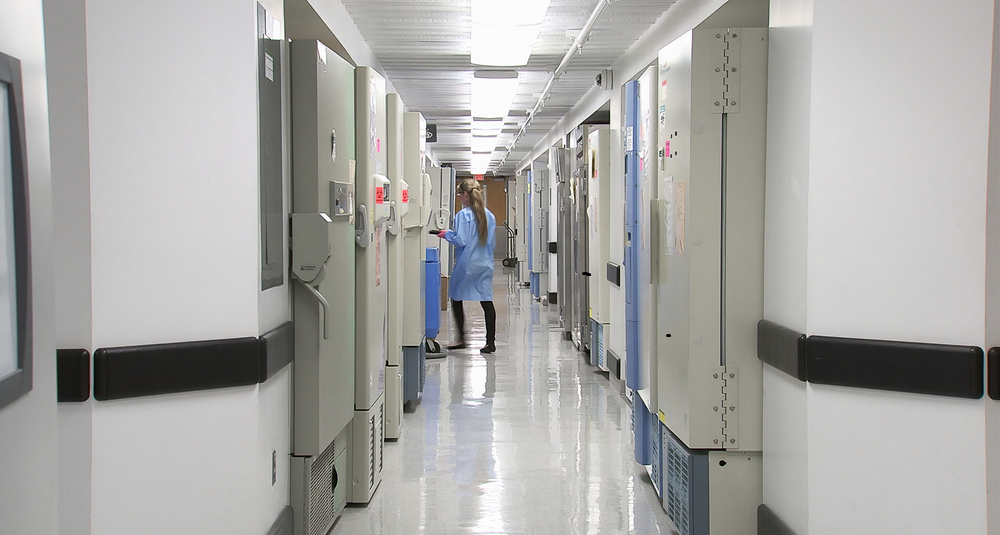Yes, bullets can go through most walls. Most offices, facilities, and workplaces simply aren’t designed or constructed to be bullet-resistant bunkers—they’re workplaces.
Some common building materials can resist gunfire. For example, cinder blocks and bricks can stand up to gunfire, but most buildings only incorporate these materials on the outer walls. And if you choose to make renovations to improve bullet-resistance, retrofitting with eight-inch cinder block isn’t a practical option. The solution? Bulletproof fiberglass.
In this blog, we’ll discuss how to build a bulletproof wall and bulletproof wall building material options, such as bulletproof fiberglass.
Bulletproof Fiberglass Makes Walls Bullet-Resistant
The key to building a bulletproof wall is bullet-resistant fiberglass. You may also hear ballistic fiberglass referred to as opaque armor or bulletproof drywall.
Bulletproof fiberglass is a two-part laminated material made from a plastic polymer matrix reinforced with synthetic fibers. The material is lightweight, strong, and rigid once dried.
Bullet-resistant fiberglass panels are made by saturating the synthetic fiber mesh with resin, forming the fiberglass panel matrix. Flat layers of this resin-soaked mesh are then squeezed and baked by an industrial press. The result is a hard, dense, and rigid bulletproof panel.
When a bullet strikes one of these fiberglass panels, it deforms, losing much of its momentum. The layers of fiberglass mesh separate. This process is called delamination, and it absorbs even more of the bullet’s energy. The fiberglass layers act like a net, preventing the bullet from passing through to the protected side of the barrier.
A bulletproof fiberglass panel just 1/4-inch thick can stop at least three 9mm bullets fired from a pistol. Making the bulletproof fiberglass panel thicker increases its ability to withstand more shots from higher-caliber firearms.
How to Install Bulletproof Walls in Your Facility
How you install bulletproof fiberglass panels depends on your facility; the process for new construction will be very different from reinforcements in a building over a hundred years old. Note that TSS only works with commercial facilities, so these recommendations are not for residential homes.
Creating Bulletproof Walls In New Construction
After the wall is framed out, bulletproof fiberglass panels are mounted to the studs. Any seams are reinforced with additional strips of fiberglass. Drywall is then mounted on top of the fiberglass panels and finished as usual.
Retrofitting Bulletproof Walls Over Modern Materials
Bulletproof fiberglass panels can also be installed on top of existing drywall; the fiberglass panels are screwed into the wall just as they would be screwed into studs. However, the texture appearance of the bulletproof panels is not visually appealing, just like any other raw construction material. Finishing with paint or veneer makes the panels blend into the surroundings.
Retrofitting Bulletproof Walls Over Historic Material
Working in historically significant buildings presents unique challenges—walls are often made of plaster, wainscoting and ornate trim is in place, and surfaces are rarely level or square. Depending on the location, there may be restrictions that limit your installation options. In these situations, it’s best to work with an experienced team of ballistic experts who can design, engineer, and fabricate bulletproof fiberglass panels that fit the historic space perfectly—no matter how many imperfections it may have.
For example, the Conrad D. Duberstein U.S. Bankruptcy Courthouse in New York City had significant restrictions that made creating a bulletproof structure in their building a unique engineering challenge. TSS put our years of experience and skills to work, ensuring they got the protection they needed without affecting the historic building elements.
Reinforce Additional Areas of Your Office or Facility with Fiberglass Panels
In addition to reinforced walls, bulletproof fiberglass panels can create effective bulletproof barriers in other areas of your facility or building. For example, you can build a secure front desk by lining the front, sides, and countertop with bulletproof fiberglass panels. This gives employees a place to duck and cover in an emergency.
To explore more protective options using bulletproof fiberglass, please contact TSS. We have decades of experience supporting businesses and organizations across the country and are ready to help protect you today.
If You Asked “Can Bullets Go Through Walls,” TSS Is Here to Make Sure They Can’t
If you would like to learn more about how to use fiberglass in your building, our Ballistic Fiberglass Solutions Guide provides a comprehensive review of how fiberglass panels can be used, how to work with them, and how TSS can help. To get started, download the Ballistic Fiberglass Solutions Guide today.

